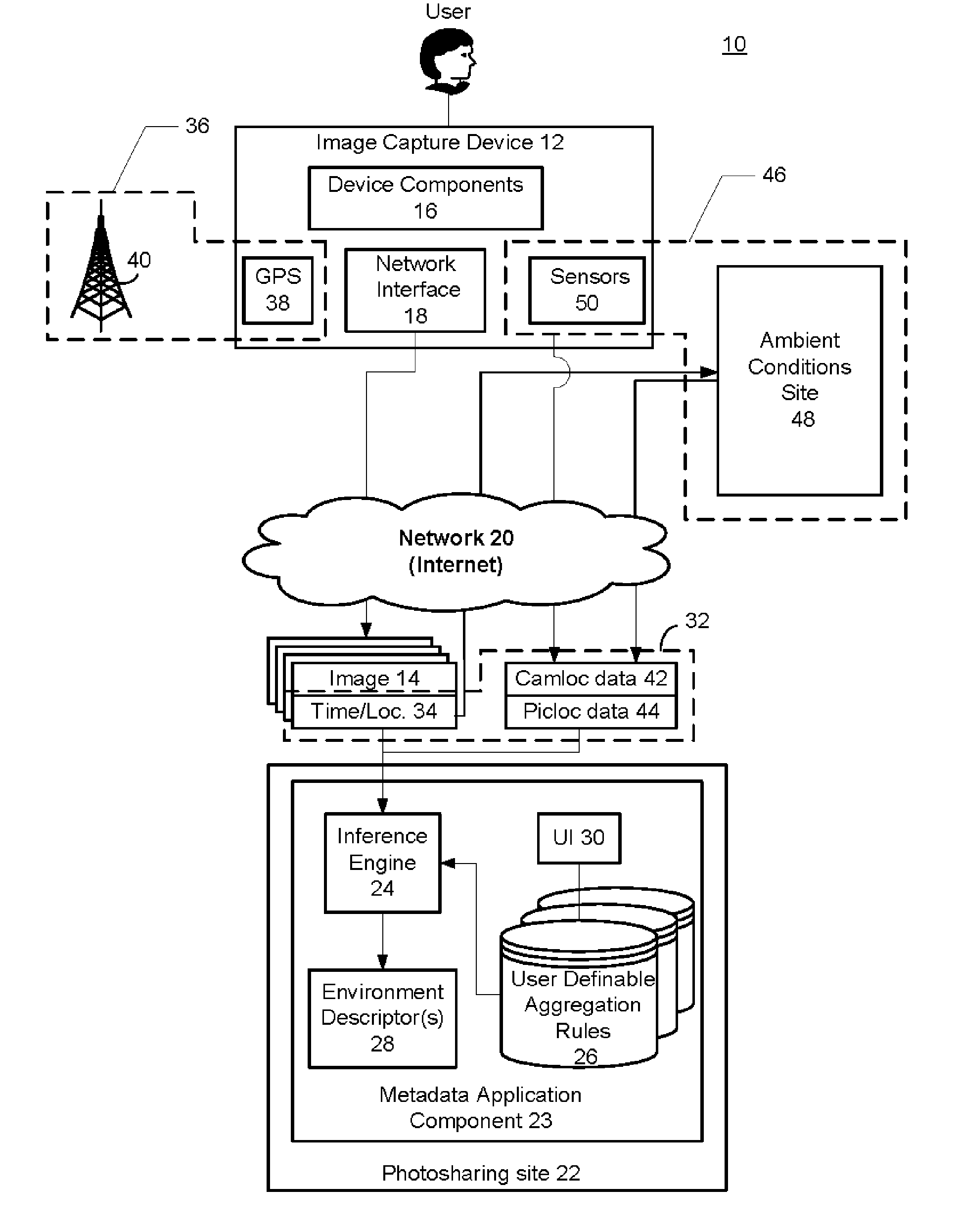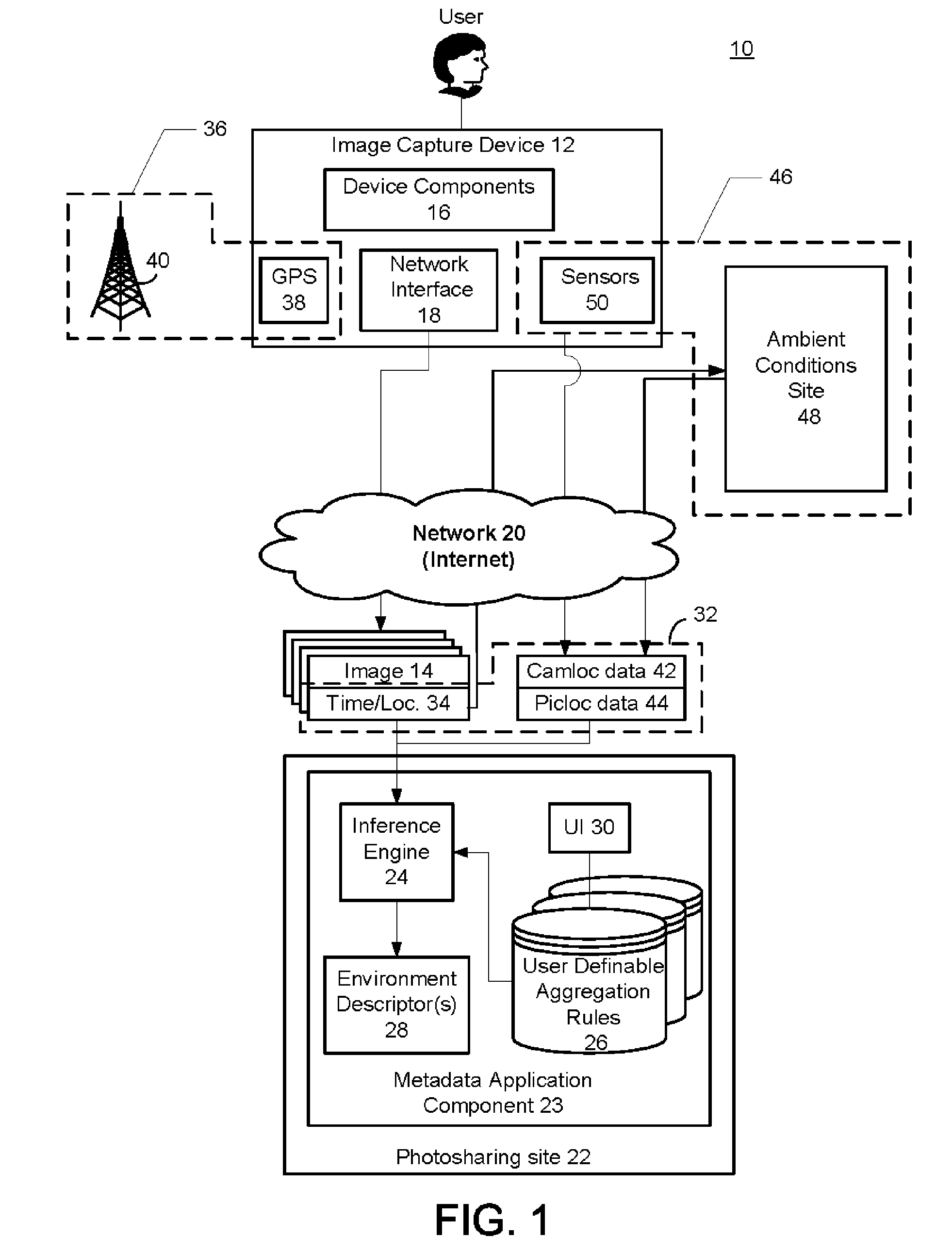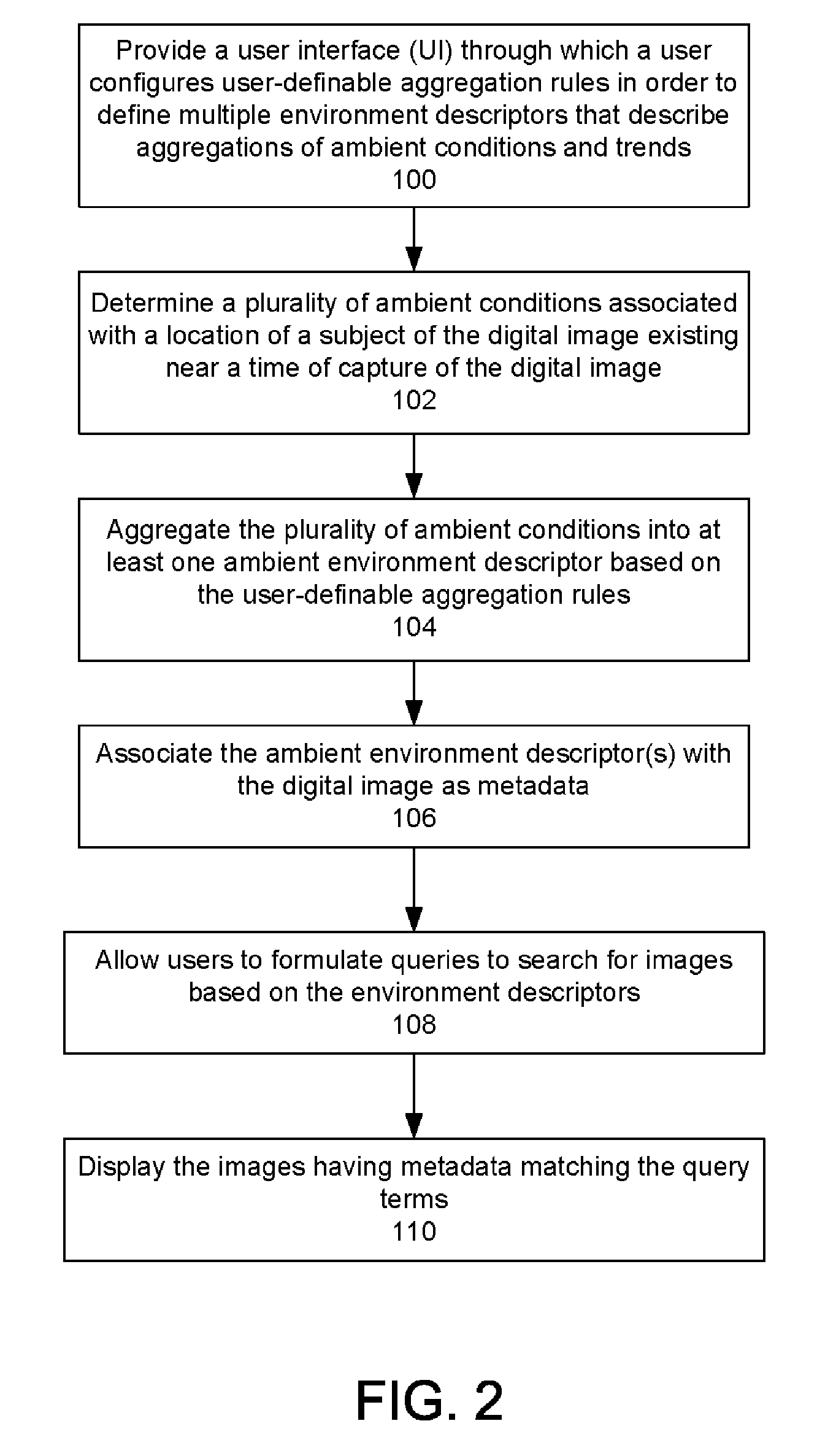Automatic Generation Of Metadata For A Digital Image Based On Ambient Conditions
a digital image and ambient conditions technology, applied in the field of digital imaging, can solve the problems of inability to retrieve images based on metadata searches as easily, users have a difficult time remembering the specific time or even the interval of time when pictures are taken, and achieve the effect of improving the retrieval of desired images
- Summary
- Abstract
- Description
- Claims
- Application Information
AI Technical Summary
Benefits of technology
Problems solved by technology
Method used
Image
Examples
example 1
Search for Images Taken Soon Before the User Exited a Car or Taxi
[0101] Average speed close to picture event below 3 miles per hour, and
[0102] Peak speed in 5-10 minutes before picture event above 10 miles per hour.
example 2
Search for Images Taken by a Number of Users Visiting the Lake District in England
[0103] On-walking-trip: Over an interval of x hours before and after this image: peak speed approximately 3 miles per hour.
[0104] On-bicycle-trip: Over an interval of x hours before and after this image: average speed peak speed approximates 8 miles per hour.
[0105] On wet ground but no rain: Over an area where there was rain the previous night.
[0106] On walking trip over wet ground: combine above definitions.
example 3
Search for Images Taken by a User and Others While on Train Trips Through the Alps or While Driving a Car in the San Francisco Bay Area
[0107] Sudden fog (happens often when going from one valley to the next): For an interval of x minutes before this image there was no fog but for an interval of y minutes before this image there was a fog (where y<x).
[0108] Sudden clearing: reverse of above.
PUM
 Login to View More
Login to View More Abstract
Description
Claims
Application Information
 Login to View More
Login to View More - R&D
- Intellectual Property
- Life Sciences
- Materials
- Tech Scout
- Unparalleled Data Quality
- Higher Quality Content
- 60% Fewer Hallucinations
Browse by: Latest US Patents, China's latest patents, Technical Efficacy Thesaurus, Application Domain, Technology Topic, Popular Technical Reports.
© 2025 PatSnap. All rights reserved.Legal|Privacy policy|Modern Slavery Act Transparency Statement|Sitemap|About US| Contact US: help@patsnap.com



